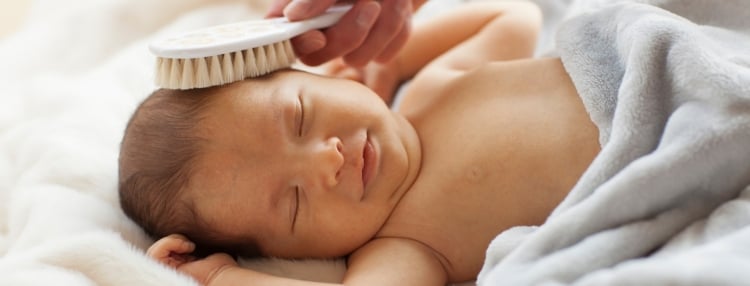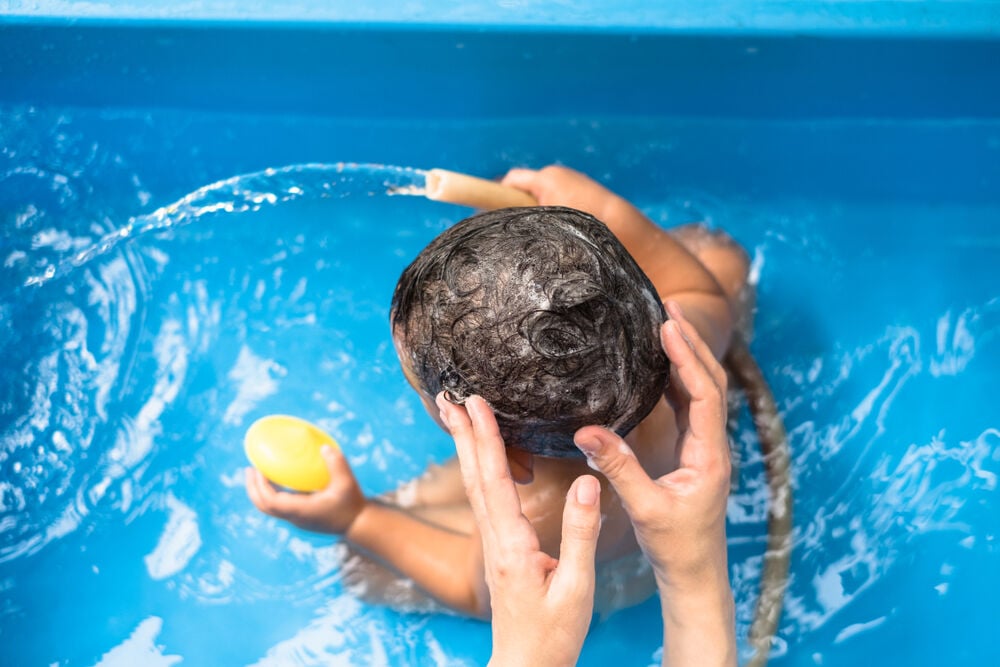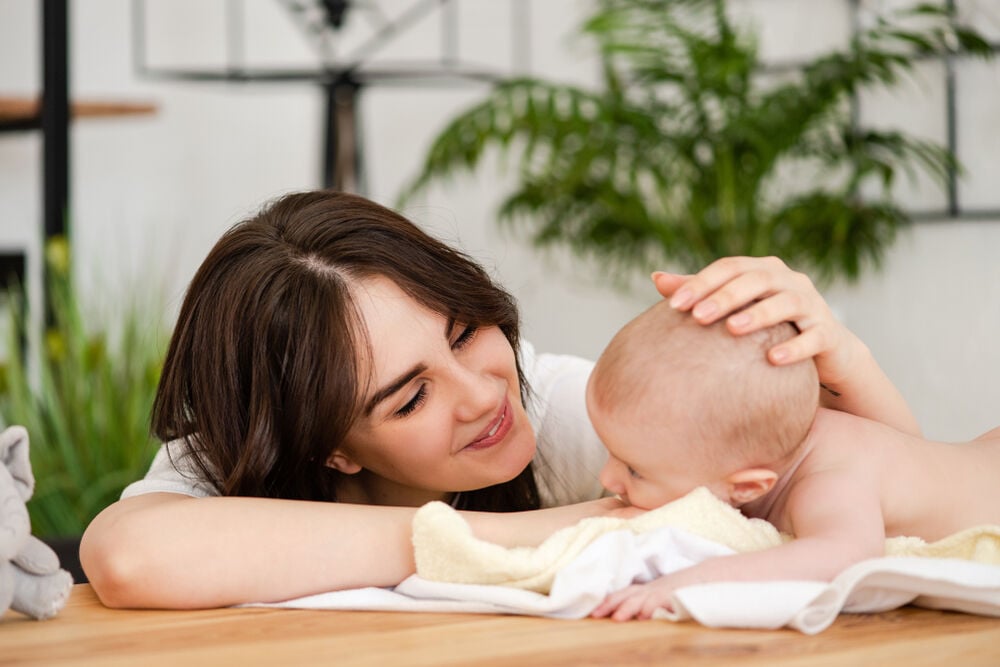-
Tracking cycle
-
Getting pregnant
-
Pregnancy
-
Help Center
-
Flo for Partners
-
Anonymous Mode
-
Flo app reviews
-
Flo Premium New
-
Secret Chats New
-
Symptom Checker New
-
Your cycle
-
Health 360°
-
Getting pregnant
-
Pregnancy
-
Being a mom
-
LGBTQ+
-
Quizzes
-
Ovulation calculator
-
hCG calculator
-
Pregnancy test calculator
-
Menstrual cycle calculator
-
Period calculator
-
Implantation calculator
-
Pregnancy weeks to months calculator
-
Pregnancy due date calculator
-
IVF and FET due date calculator
-
Due date calculator by ultrasound
-
Medical Affairs
-
Science & Research
-
Pass It On Project New
-
Privacy Portal
-
Press Center
-
Flo Accuracy
-
Careers
-
Contact Us
What Is Cradle Cap? Flaky Scalp Prevention and Treatment


Every piece of content at Flo Health adheres to the highest editorial standards for language, style, and medical accuracy. To learn what we do to deliver the best health and lifestyle insights to you, check out our content review principles.
Why do babies have cradle cap?
When a baby is in utero, they are in a controlled environment. However, when they are born, they are exposed to new things that their skin has never encountered before. Your baby has tender, sensitive skin, and this is when infant cradle cap can occur.
Cradle cap typically appears on babies' scalps and looks like white or yellowish scaly or crusty patches. It can also be found on the eyelids, eyebrows, nose, ears, neck, armpits, and groin. Don't worry if your baby develops cradle cap. It does not mean that they will necessarily have dandruff as an older child or adult.
Yellow spots on babies' skin
Small white or yellow bumps on your baby's skin can indicate two different conditions. These conditions are not related to cradle cap but are commonly seen in the first few weeks of life. The first is called erythema toxicum. The cause is unknown, and it looks like small red patches with a white or yellow dot in the middle.
The other skin condition is milia. These small white or yellow spots on the skin occur as a result of blocked oil glands. Both of these conditions can last anywhere from a day to a few weeks and will resolve on their own without treatment.
Cradle cap on the face: is it a problem?
It is normal for babies to develop cradle cap on their face, neck, underarms, and diaper area. Treatment in these areas is similar to that for the top of the head. Gently wash these areas with baby shampoo once a day. If the areas are crusty, mineral oil applied a few hours before bathing can help loosen this buildup of cradle cap.
What causes cradle cap?
Cradle cap is not contagious, and it is not caused by poor hygiene. The cause of cradle cap is unknown, but one theory is that hormones are a contributing factor. Hormones can pass from the mom to the baby before birth and cause an overproduction of sebum in the hair follicles and oil glands. Another theory is that cradle cap results from a yeast infection that grows alongside bacteria in the sebum.
Flaky scalp risks and complications
Cradle cap tends to be crusty and sticks to the scalp. This is very different from a dry scalp, where the skin easily flakes off. Dry skin can appear on your baby's head just like it can on any other part of their body. Baby skin can get dry, flake off, or even peel during this time.
If your baby's scalp seems to be dry and flaking, try to wash their hair no more than two or three times per week and be sure to thoroughly rinse their skin with clean, warm water. Soap residue can be irritating to delicate baby skin. Make sure that you always use products that are specially made for babies, and ask your baby's doctor about a moisturizing shampoo or body wash if it continues to be a problem.
If this dry, flaky skin continues beyond the first few weeks of life, your baby may be experiencing another type of skin condition such as eczema or an allergic reaction. This may require a different kind of treatment for your baby, and their doctor can evaluate their skin condition.
3 ways to get rid of your baby's dry scalp
For many babies, cradle cap requires no medical treatment and will resolve on its own. There are some basic things that parents can do to help their baby's skin clear up.
1. Try oils
Before you wash your baby's hair, apply oil to the areas where they have cradle cap. If you leave this oil in place for 15–20 minutes, it can help loosen the flaking skin and make it easier to remove. Some suggested products for this include:
- Mineral oil
- Petroleum jelly
- Baby oil
2. Use baby shampoo regularly

You should wash your baby's hair daily if they have cradle cap. Always use a mild shampoo made especially for babies, and gently massage the scalp when applying the shampoo. Be sure to thoroughly rinse their hair with warm water when finished and lightly towel dry.
If frequent shampooing does not make a difference, talk with your baby's doctor about alternative products for cradle cap. These might include a low-potency hydrocortisone cream or a shampoo that includes a 2% anti-fungal medication. Just be cautious when using this type of product. It can cause irritation if it gets in your baby's eyes. Never use any over-the-counter hydrocortisone creams without talking to your baby's doctor first.
3. Gently massage or brush your baby's scalp

Take a quiz
Find out what you can do with our Health Assistant
Most babies love to have their hair stroked or brushed and their scalp massaged. You may even find that if you do this while they are eating, it will make them relaxed and possibly fall asleep. If you use a brush, be sure to use a soft bristle brush made for baby hair. These are made with no sharp edges that can scratch a newborn's scalp.
How to prevent cradle cap: 4 proven tips
There are different ways that you can help prevent cradle cap from starting or reoccurring on your baby's scalp. Some of these are as follows.
- Once the cradle cap is gone, wash your baby's hair every two to three days. Continue to do this with the same mild baby shampoo to prevent scale buildup from returning. When bathing your newborn, gently rub your baby's scalp with your fingers or a washcloth to loosen the scales. Never scratch at the scaly patches. This could cut your baby's scalp and increase their risk of infection.
- Try running a humidifier in your baby's room while they sleep. By adding humidity to the room, you help your baby's skin retain more moisture and keep cradle cap away. This can make it much easier to prevent other skin conditions that your baby could experience as well.
- Apple cider vinegar can be used to ward off cradle cap on your baby's scalp and for dry or irritated skin on their body. A solution of equal parts apple cider vinegar and water can be used as a hair rinse after you shampoo your baby's hair. This solution should be left on the hair for about 10–15 minutes and then rinsed with clear warm water. This can also be used on adult hair to make it soft and restore natural shine.
- Calendula cream or oil can be beneficial for dry and irritated skin. The herb calendula is also known for its natural antibacterial and anti-fungal properties. This type of product is not only soothing, but can also prevent cradle cap.
Cradle cap is a common condition among infants. Fortunately, it's not thought to be itchy or painful, and they will outgrow it. It usually clears up on its own in a few weeks to months and does not leave any discoloration or scaring. Remember to always consult a doctor if you're concerned about your baby's health.


Hey, I'm Anique
I started using Flo app to track my period and ovulation because we wanted to have a baby.


The Flo app helped me learn about my body and spot ovulation signs during our conception journey.


I vividly
remember the day
that we switched
Flo into
Pregnancy Mode — it was
such a special
moment.
Real stories, real results
Learn how the Flo app became an amazing cheerleader for us on our conception journey.




